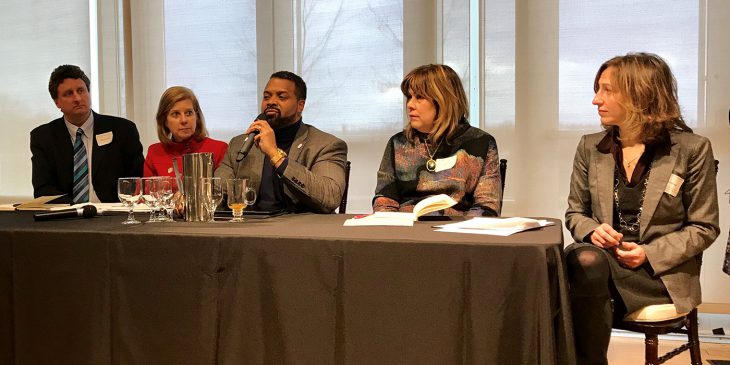“What caused my cancer?”
It’s a question that all too often doesn’t have a clear-cut answer. A national group of oncologists, public health practitioners, environmental advocates, community health proponents and others gathered in Pittsburgh Tuesday to discuss the issue at a sold-out, day-long conference, titled “Cancer and The Environment.”
“There’s this idea that environmental-related cancers are small, maybe causing only 6 percent of all cancers, but that number is likely a gross underestimate,” said Dr. Patricia Opresko, a professor at the University of Pittsburgh Graduate School of Public Health who does research at UPMC Hillman Cancer Center. “We have failed to really appreciate the contribution that environmental exposures have on cancer.”
Opresko was one of several Pitt and UPMC scientists and clinicians who spoke at the conference, which was organized by the University of Massachusetts Lowell and the Pittsburgh-based Breathe Project.
Dr. Jim Fabisiak, director of Pitt Public Health’s Center for Healthy Environments and Communities, shared several statistics that place Allegheny County in the top 1 to 2 percent of U.S. counties for cancer risk from hazardous air pollutants, such as diesel particulates, formaldehyde and benzene. But it was the conclusion of his presentation that drove his data home.
“This is my dad. He died of lung cancer about three years ago,” Fabisiak said, sharing a photograph of a man with warm, kind eyes and informing the audience that his dad smoked but quit 30 years before his death, worked in the newspaper industry with chemicals associated with cancer and entertained hobbies that had him spending hours in the basement where radon levels might have been high. “So what’s to blame for his cancer? What’s the contribution from his occupation, his hobbies? What’s the big picture? I think we should develop policies that integrate the complete array of environmental factors and not look at each in isolation.”
Pitt and UPMC scientists are exploring the impact of unconventional natural gas drilling – including fracking, which has increased substantially in Pennsylvania in the past decade – on cancer development. Shaina Stacy, Ph.D., a postdoctoral researcher at Pitt Public Health and UPMC Hillman shared data from studies elsewhere that found an association between childhood cancers and such drilling. She also showed preliminary data from her analysis of the issue in the Pittsburgh region, which could not conclusively link proximity to wells with childhood cancer, but did indicate more study was warranted.

“Childhood cancers and unconventional natural gas drilling are not cause-and-effect; it’s more complex than that,” she said. “What we do know is that pollutants associated with drilling are carcinogenic. We’re talking about potentially modifiable factors here.”
Dr. Linda Robertson, associate director of health equity, education and advocacy at UPMC Hillman Cancer Center, noted that community inclusion will be critical to finding solutions.
“I think we really need to get more into the communities,” she said. “The information our community partners can feed back to us, the data and contributions from focus groups, is so rich. What is the best way to educate in those communities? Who do we educate and how? What are the solutions? What is realistic?”
Before everyone departed, she collected contact information of both conference presenters and audience members to organize continued meetings to spur action.
“We know that harmful chemicals in our air, our water, our food and even the products we use are important contributors to cancer,” said Dr. James Herman, a medical oncologist and co-director of the Lung Program at UPMC Hillman Cancer Center, who introduced the conference. “As medical professionals, it’s critical that we include these factors in our prevention efforts.”








